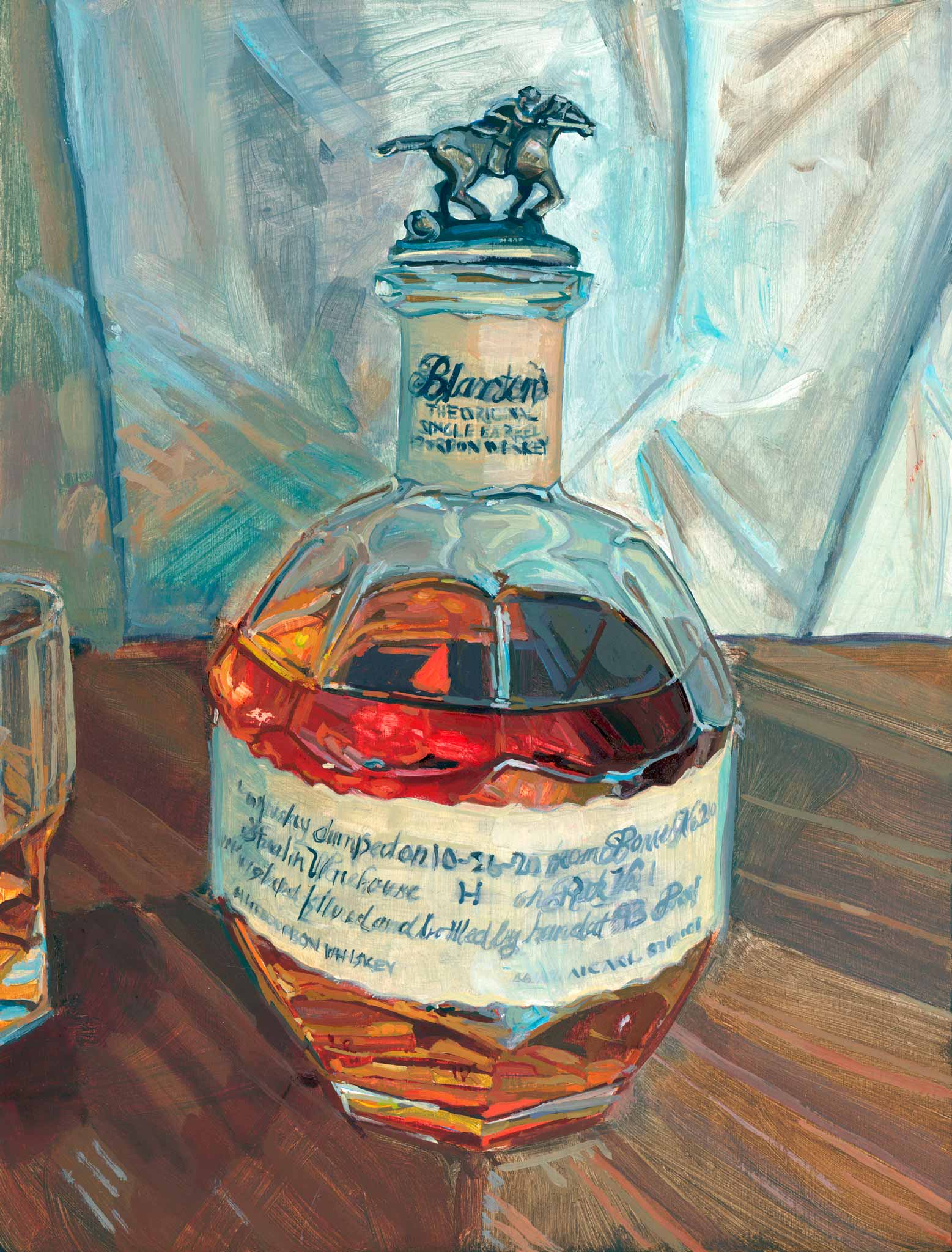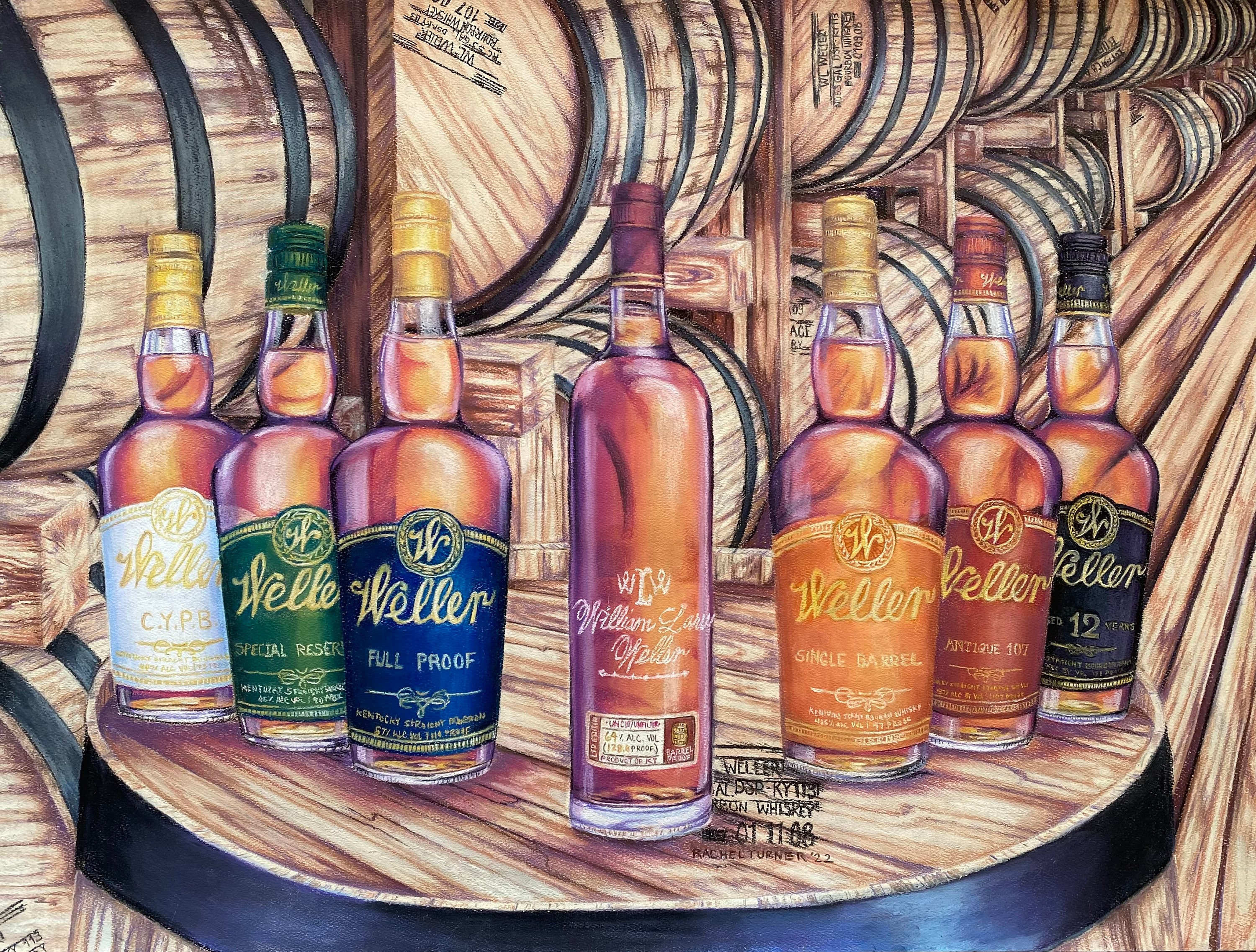The Importance of Whiskey Art in Celebrating Heritage and Workmanship in the Beverage Industry
The complex relationship in between bourbon art and the party of heritage and craftsmanship within the drink sector can not be overemphasized. Via thoughtfully made labels and bottles, bourbon brand names encapsulate their historic roots and the artisanal abilities that define their production methods. This creative dimension not only boosts market charm however also functions as an avenue for cultural narration, cultivating a deeper connection in between the craft and the consumer. As we check out the different elements of this topic, fascinating questions regarding the effect of modern fads on conventional techniques develop, triggering further exam.
The Historic Roots of Whiskey
At the heart of whiskey's allure exists a rich tapestry of historical origins that trace back to ancient people. The origins of scotch can be connected to the purification techniques of the Sumerians and Babylonians around 2000 BCE, where early forms of fermented grain drinks began to arise. However, it was in the Center Ages that the art of distillation progressed considerably, specifically in Ireland and Scotland, resulting in the development of bourbon as we understand it today.
The term "whiskey" itself stems from the Gaelic word "uisce beatha," indicating "water of life." This expression underscores the cultural value of scotch in Celtic societies, where it was usually related to rituals, events, and common bonding. By the 15th century, purification came to be an acknowledged craft within reclusive areas, leading the way for the facility of legal distilleries.
As profession routes broadened, scotch's appeal expanded, going beyond local borders and capturing the interest of connoisseurs worldwide. Whiskey Art. This historical journey reflects not only the craftsmanship behind whiskey production however additionally its indispensable duty in social and social contexts, noting it as a considerable beverage throughout history
Artistic Expression in Branding
Whiskey branding stands as a compelling crossway of creativity and commerce, where visual identity plays an essential role in shaping customer assumption. The visual appeals of whiskey labels, packaging, and advertising and marketing materials reflect not just the brand name's story but additionally its core values and heritage. With artistic expression, distilleries share a story that resonates with consumers, stimulating emotions and stimulating connections.
Using color, typography, and imagery in branding serves to differentiate items in a saturated market. Standard concepts may stimulate a sense of credibility and craftsmanship, while modern-day designs can indicate development and forward-thinking. This critical artistic instructions boosts brand acknowledgment and commitment, allowing consumers to build a personal partnership with the whiskey they select.
In addition, creative expression in branding typically functions as an event of regional heritage. Distilleries frequently integrate neighborhood symbols or historical referrals right into their designs, producing a feeling of place that welcomes customers to take part in a wider social experience. Ultimately, the artistry behind scotch branding not just boosts aesthetic appeal however also enhances the overall story of the brand name, cultivating a much deeper appreciation for the craftsmanship and heritage embedded in each bottle.
Craftsmanship in Bottle Design
The creativity obvious in scotch branding expands past aesthetic identification to incorporate the workmanship entailed in container style. Each container acts as a vessel not simply for the spirit within, however additionally for the story it outlines its beginning, top quality, and practice. The layout procedure requires thorough focus to detail, as elements such as closure, shape, and product contribute considerably to the overall perception of the bourbon.
Workmanship in bottle design involves picking high-quality glass that can boost the scotch's color and quality, while additionally supplying a tactile experience for the customer. The shape of the bottle need to be visit site both visually enticing and useful, usually showing the heritage of the brand. Lots of distilleries choose distinct forms or embossed logo designs that stimulate a sense of credibility and history.
In addition, the label design and typography play a critical function in communicating the brand name's narrative. Limited Edition. A well-crafted bottle not just captivates the customer's eye but additionally reinforces the brand name's commitment to top quality and tradition. In this means, the craftsmanship of container design ends up being a vital element of the whiskey experience, merging virtuosity with a profound regard for heritage
Social Importance of Bourbon Art
Celebrating custom and workmanship, the cultural relevance of bourbon art transcends simple aesthetic appeals, intertwining with the historic and social narratives of the areas from which it comes from. Each container works as a canvas, portraying the distinct stories, folklore, and traditions that have actually formed local whiskey-making practices. The complex layouts frequently show the heritage of the distillers, incorporating signs and concepts that reverberate with the culture and values of their neighborhoods.

Furthermore, scotch art plays a crucial duty in communal gatherings and celebrations, serving as a substantial link in between individuals and their shared experiences. By valuing the virtuosity in scotch product packaging, customers cultivate a much deeper understanding and regard for the craft, eventually enriching their enjoyment of the drink itself.
Modern Trends in Scotch Presentation
In recent years, the presentation of scotch more information has actually progressed to mirror modern preferences and trends while still honoring standard workmanship - Limited Edition. Distilleries are progressively concentrating on visual elements that improve the general alcohol consumption experience, linking the gap between heritage and modernity
Ingenious container layouts have actually arised, commonly including lasting products and artistic labels that tell compelling stories. Lots of brand names currently team up with local artists, infusing their items with special aesthetic expressions that reverberate with customers. In addition, limited-edition launches are usually packaged in collectible containers, including worth and allure for aficionados.

Verdict
In conclusion, whiskey art serves as a crucial avenue for revealing the heritage and workmanship fundamental in the beverage industry. Through intricate branding, cutting-edge container styles, and culturally considerable creative elements, whiskey brand names efficiently recognize their practices and connect with consumers.


Workmanship in container design involves picking high-grade glass that can enhance the bourbon's shade and clarity, while also giving a tactile experience for the consumer. In this means, the workmanship of bottle layout ends up being an important aspect of the scotch experience, merging virtuosity with a profound regard for heritage.
In final thought, bourbon art offers as an important avenue for revealing the heritage and craftsmanship intrinsic in the beverage sector.